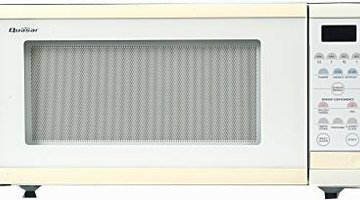Five Types of Containers You Can Use in a Microwave
Everyone knows not to use foil-lined or metal containers in a microwave oven, because the metal creates a spark. Not everyone knows using leftover plastic tubs from butter can be dangerous or troublesome. If a container advertises it is microwave safe, it is suitable for use. If it does not, it is probably best to avoid it when cooking in the microwave oven.
Glass Containers

Heatproof glass like Pyrex and Anchor Hocking containers are best to use in a microwave. Most modern glass containers are marked as being microwave safe. Older glass containers with bubbles in the glass are not suitable, because the bubbles can explode and cause the glass to break. To test a glass container for suitability, microwave it empty at a regular temperature for one minute. If the container feels warm, and not hot, it is good to use. Leaded glass is also suitable for microwaves, but do not using it for foods with liquids that are acidic.
Ceramic Containers
Some ceramic containers have a glaze that becomes hot in the microwave. This does not make them unsuitable for use in a microwave oven, but it does require the use of a potholder. Glazes containing lithium, lead and barium, sometimes put on decorative ceramics, aren't safe for use in or out of the microwave. Food should never be stored in them at all. Don't use ceramic containers with sparkles or metallic trim. Corning Ware is a suitable ceramic container for microwave use.
Baskets
Baskets made of reeds, wood and straw with no metal parts are suitable for microwave use. Line the basket with white napkins or paper towels to absorb moisture and place bread or rolls inside for fast warm-ups.
Paper
Paper plates and other paper containers are fine to use in a microwave oven so long as they are white and are not foam insulated. They should not contain any plastic that melts into the food.
Plastic Containers
Only plastic containers labeled as microwave safe are suitable for use. Butter tubs and other containers sold with cold food in them are not suitable. Chemicals in the plastic may transfer to the food when microwaved. Use only food-grade, microwave-safe plastic containers. Not only are other containers hazardous to your health, but they also tend to melt in a microwave.
References
Writer Bio
Deborah Harding has been writing for over nine years. Beginning with cooking and gardening magazines, Harding then produced a gardening and cooking newsletter and website called Prymethyme Herbs in 1998. Published books include "Kidstuff" and "Green Guide to Herb Gardening." She has a Bachelor of Music from Youngstown State University and sings professionally.
Photo Credits
- Zedcor Wholly Owned/PhotoObjects.net/Getty Images
More Articles



